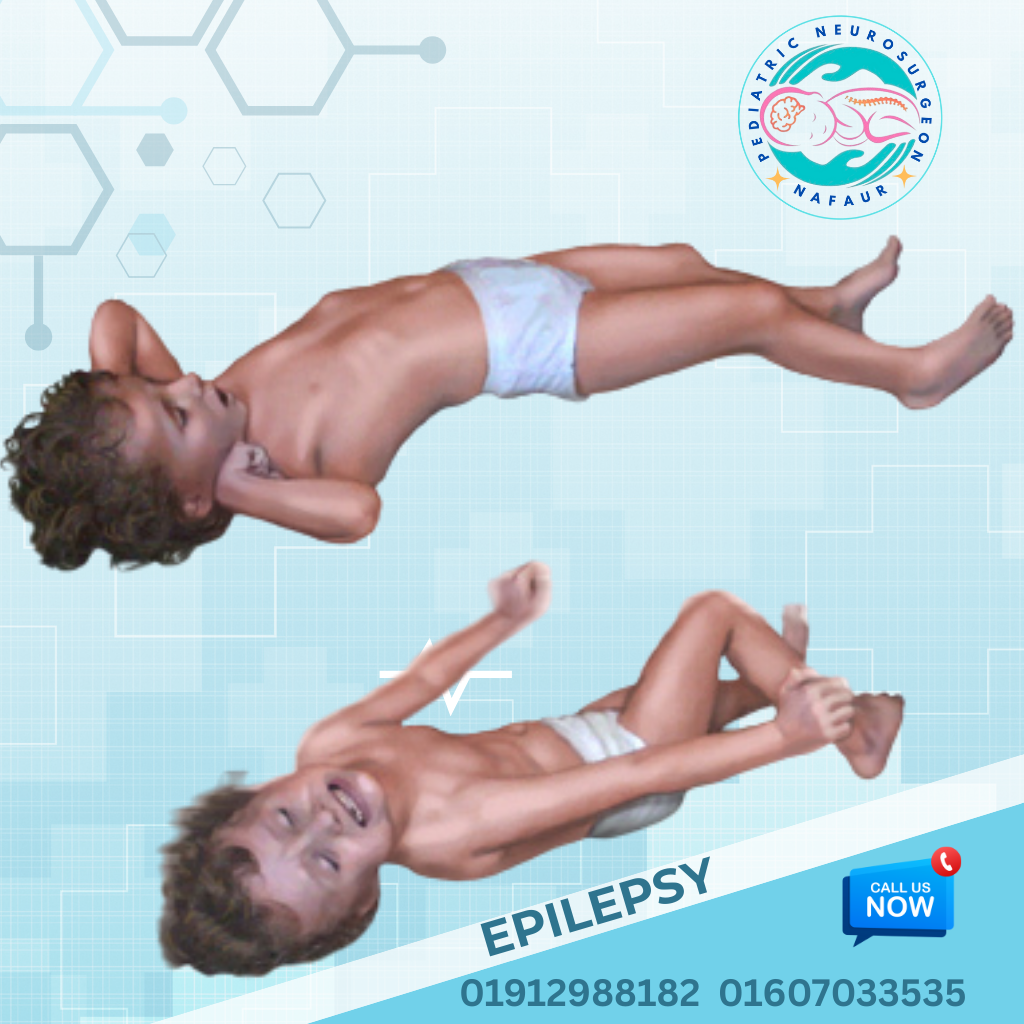Epilepsy
Epilepsy
Pediatric epilepsy refers to a group of neurological disorders where a child experiences recurrent, unprovoked seizures due to abnormal electrical activity in the brain. It is one of the most common chronic neurological conditions in children, and in many cases, epilepsy can be controlled or even cured with proper medical treatment and, in select cases, surgical intervention. In Bangladesh, lack of awareness, delayed diagnosis, social stigma, and insufficient access to pediatric neurology and neurosurgery services make epilepsy management a major public health challenge. As a leader in pediatric neurosurgical care, Dr. Md. Nafaur Rahman offers evidence-based, child-focused treatment for epilepsy, especially in cases that are drug-resistant or related to structural brain lesions. 🌍 Pediatric Epilepsy in Bangladesh: A Growing Health Burden In Bangladesh, an estimated 1 in 100 children may suffer from epilepsy. Many children are misdiagnosed or undertreated, especially in rural areas where EEG and MRI are not easily available. Social stigma often prevents families from seeking help, and superstitions around seizures contribute to poor outcomes. Dr. Md. Nafaur Rahman is actively working to raise awareness, reduce stigma, and provide modern epilepsy diagnosis and neurosurgical treatment, especially for those with refractory epilepsy, brain tumors, congenital malformations, or post-infection epilepsy. ⚠️ Common Signs and Symptoms of Pediatric Epilepsy ⚡ Recurrent seizures or convulsions 😵💫 Sudden staring spells or blank looks 🤕 Muscle stiffness or limpness 😴 Sudden loss of consciousness or falling 👄 Lip-smacking, chewing, or repetitive movements 🚫 Episodes of unresponsiveness 🎓 Learning difficulties, behavioral changes, or memory loss “Not all seizures look the same. Many children in Bangladesh suffer in silence due to subtle, undiagnosed epilepsy.” — Dr. Md. Nafaur Rahman 🧬 Causes of Pediatric Epilepsy Epilepsy in children can be caused by a wide range of factors, many of which are detectable and sometimes surgically treatable. Common Causes in Bangladesh: 🧠 Perinatal brain injury or oxygen deprivation during birth 🧬 Congenital brain malformations (e.g., cortical dysplasia, tuberous sclerosis) 💥 Post-traumatic epilepsy after head injury 🦠 Infectious causes like neurocysticercosis, cerebral TB, or meningitis 🧠 Brain tumors (e.g., low-grade gliomas, ganglioglioma) 🧬 Genetic syndromes (e.g., Dravet syndrome, Lennox-Gastaut) 🔌 Metabolic disorders ❌ Unknown (idiopathic) 🧪 Diagnosis of Pediatric Epilepsy Dr. Md. Nafaur Rahman ensures precise diagnosis through a multidisciplinary approach, using advanced diagnostic tools available at NINS and Bangladesh Paediatric Neurocare Centre. Diagnostic Tools Include: 📊 Electroencephalogram (EEG) – To record brain electrical activity 🧠 MRI Brain – To detect structural causes like tumors or cortical malformations 💉 Metabolic screening – In infants or syndromic children 🧬 Genetic testing – For inherited epilepsy syndromes 🩺 Video EEG monitoring – For surgical planning in refractory epilepsy 🧑⚕️ Neuropsychological assessment – For learning and behavioral impacts 🛠️ Treatment Options for Pediatric Epilepsy Most children with epilepsy can be managed with anti-seizure medications (ASM). However, for refractory epilepsy (not controlled with two or more drugs), surgical options may offer a cure or significant improvement. 💊 Medical Management: ✅ Tailored antiepileptic drugs (AEDs) based on seizure type ⚠️ Avoiding triggers like sleep deprivation, fever, or stress 🔁 Regular follow-up to monitor drug side effects 🧠 Emergency care plans for seizure clusters or status epilepticus 🧠 Surgical Options Offered by Dr. Nafaur Rahman: Lesionectomy – Removal of tumors or malformations causing seizures Focal cortical resection – In cases of localized epileptic focus Temporal lobectomy – For mesial temporal lobe epilepsy Corpus callosotomy – For drop attacks or generalized seizures Hemispherectomy – In severe one-sided brain disorders Vagus nerve stimulation (VNS) – Neuromodulation for inoperable epilepsy “Surgery for epilepsy can be life-changing. Children who had daily seizures can return to school, play, and live without fear.” — Dr. Md. Nafaur Rahman 🔁 Long-Term Management and Rehabilitation After medical or surgical treatment, children require ongoing support to optimize development, learning, and social integration. 🧑🏫 Special education planning and school reintegration 👨⚕️ Neurodevelopmental therapy (speech, motor, cognitive) 🧒 Parental counseling to manage expectations and social stigma ⚕️ Continued neurology follow-up to adjust medications 📆 Monitoring for drug side effects and seizure recurrence 🚨 What Happens Without Proper Treatment? If left untreated or mismanaged, epilepsy can lead to: ⚡ Frequent seizures impacting daily life 🧠 Brain damage or regression in children 📉 Poor academic performance 🛌 Social isolation and stigma ⚰️ Sudden unexpected death in epilepsy (SUDEP) in rare cases 👨⚕️ Why Choose Dr. Md. Nafaur Rahman for Pediatric Epilepsy Care? 🧠 Bangladesh’s leading pediatric neurosurgeon for drug-resistant epilepsy surgery 🏥 Provides care through NINS and private Neurocare Centre 🎓 Trained in EEG interpretation, neuroimaging, and surgical epilepsy management 🤝 Works with a team of pediatric neurologists, psychologists, and rehab specialists 🌐 Advocate for epilepsy awareness and anti-stigma initiatives across Bangladesh 📞 Contact Dr. Nafaur Rahman for Evaluation and Treatment Dr. Md. Nafaur Rahman Assistant Professor, Pediatric Neurosurgery, NINS Chief Consultant, Bangladesh Paediatric Neurocare Centre 📱 For Serial/Appointment: 📞 01912988182 | 📞 01607033535 🌐 Website: www.neurosurgeonnafaur.com










